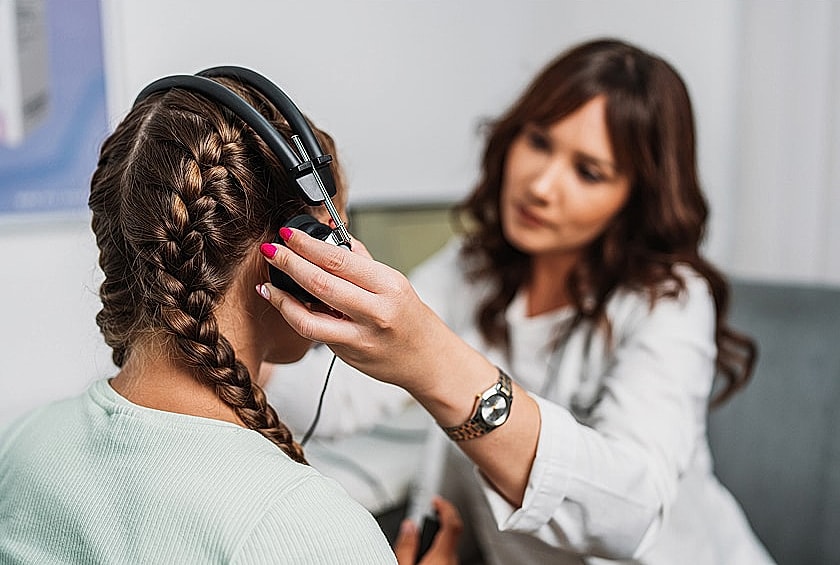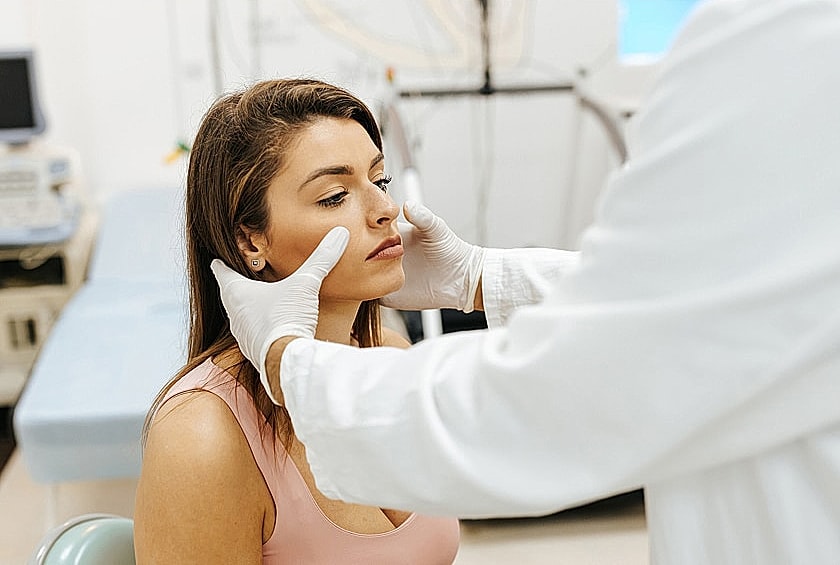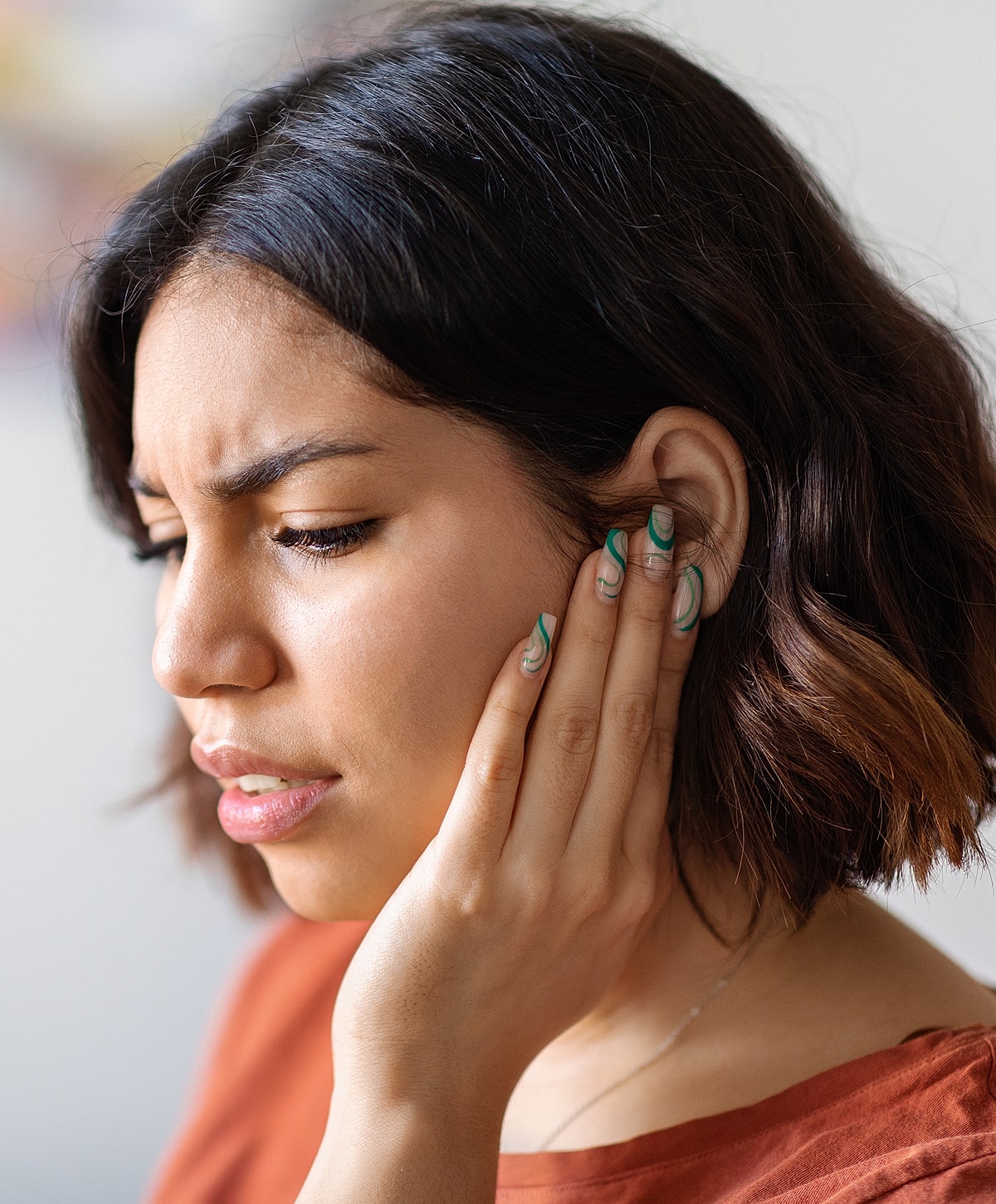At SoCal ENT in Palmdale, we specialize in diagnosing and treating TMJ disorders and chronic jaw pain. Our ENT specialists identify the root cause of discomfort—whether due to muscle tension, joint misalignment, or inflammation—and create personalized treatment plans to relieve pain, restore jaw movement, and improve daily function. Experience lasting relief through advanced, compassionate care.

















Jaw pain, clicking, headaches, or difficulty chewing can all be signs of temporomandibular joint (TMJ) disorder, a condition that affects the hinge joint connecting the jawbone to the skull. When this joint becomes strained or misaligned, it can cause pain and limit normal jaw movement.
At SoCal ENT, our specialists offer comprehensive, minimally invasive TMJ care that targets both the cause and the symptoms of your discomfort. Whether your condition stems from teeth grinding, injury, arthritis, or jaw tension, we’ll develop a personalized treatment plan to restore comfort, improve jaw function, and enhance your quality of life.





The temporomandibular joint (TMJ) connects the jawbone to the skull and allows smooth movement for speaking, chewing, and swallowing. When this joint becomes inflamed, strained, or misaligned, it can cause pain, stiffness, and limited jaw movement—commonly referred to as TMJ disorder.
Common Symptoms Include:
If left untreated, TMJ disorder can progress over time, leading to persistent pain, eating difficulties, and long-term joint strain.
TMJ disorder can arise from a combination of structural, muscular, or lifestyle-related factors. Common causes include:
At SoCal ENT, we take a thorough and personalized approach to diagnosing TMJ disorder, focusing on both the source of discomfort and how it affects daily function.
Your Evaluation May Include:
After confirming a diagnosis, our specialists design a personalized treatment plan aimed at relieving pain, improving jaw mobility, and preventing future flare-ups.
Our TMJ treatments are designed to alleviate pain, restore optimal jaw function, and minimize long-term joint strain. Each plan is tailored following a detailed evaluation of symptoms, medical history, and contributing factors.
What It Is: A manual therapy technique that targets muscle tension, enhances circulation, and reduces stiffness in the jaw and surrounding structures.
Best For: Patients with muscle tightness, tension-related headaches, or restricted jaw movement.
How It Works: Focused massage and stretching techniques are used to release muscle adhesions and restore range of motion.
Benefits: Immediate reduction in pain, decreased inflammation, and improved jaw mobility.
What It Is: A non-invasive, FDA-cleared modality that promotes tissue repair and reduces inflammation.
Best For: Individuals experiencing TMJ inflammation, chronic joint pain, or arthritis-related dysfunction.
How It Works: Low-intensity laser energy stimulates cellular regeneration, improving blood flow and reducing inflammation.
Benefits: Rapid pain relief, accelerated tissue healing, and no required downtime.
What It Is: A customized rehabilitation program designed to strengthen jaw muscles, correct posture, and relieve muscle tension.
Best For: Patients whose TMJ disorder is related to muscular imbalance, posture issues, or chronic strain.
How It Works: Incorporates targeted jaw exercises, manual therapy, and neuromuscular re-education to restore balance and stability.
Benefits: Improved long-term joint function, reduced recurrence of pain, and enhanced muscle coordination.
What It Is: A minimally invasive injectable treatment that relaxes overactive jaw muscles contributing to pain and tension.
Best For: Patients with bruxism (teeth grinding), jaw clenching, or chronic muscular pain in the TMJ region.
How It Works: Small doses of Botox® are administered into specific jaw muscles to inhibit excessive contraction and relieve pressure on the joint.
Benefits: Noticeable pain reduction within days, minimal discomfort, and results lasting three to four months.
What It Is: A holistic, adjunctive approach to TMJ management focused on long-term symptom control.
Best For: Individuals whose TMJ symptoms are exacerbated by stress, poor posture, or muscle tension.
How It Works: Incorporates relaxation strategies, ergonomic adjustments, and behavioral techniques to minimize jaw strain.
Benefits: Reduces recurrence of TMJ symptoms, promotes relaxation, and supports sustainable pain management.

If you experience jaw pain, clicking or popping sounds, headaches, or difficulty chewing, you may be a good candidate for TMJ evaluation and treatment.
You May Benefit from TMJ Treatment If You:
Who Should Avoid Certain TMJ Treatments?
Most patients can safely undergo non-invasive options such as physical therapy, laser therapy, or Botox® injections. However, surgical treatments may not be appropriate for individuals with advanced joint damage or medical conditions that could delay healing.
During your consultation, our specialists will review your medical history, symptoms, and lifestyle to determine the safest and most effective treatment plan for your needs.

What to Expect During TMJ Treatment Recovery:
Aftercare Tips for TMJ Relief:
Many Palmdale TMJ Treatment patients resume normal activities right away. However, for sustained relief, ongoing care and maintenance might be needed.

Most Palmdale TMJ Treatment patients begin noticing relief within a few days of treatment, with continued improvement over the following weeks.
Therapies such as physical therapy, laser therapy, and Botox® injections often provide significant reduction in pain and tension within one to two weeks. As jaw mobility improves and inflammation subsides, patients typically experience easier chewing, fewer headaches, and a lasting sense of comfort and balance.
Relief varies by treatment. Options like physical therapy, Botox, and laser therapy can ease symptoms for months. Meanwhile, lifestyle adjustments often bring lasting improvements.
Proper treatment often leads to significant improvement for many patients. In certain instances, TMJ disorder can be managed over the long term without the need for surgery.
Ignoring TMJ symptoms can lead to them worsening. Tackling the underlying issue is key to finding lasting relief.
Coverage varies based on your insurance plan and the treatment chosen. We can assist in verifying your benefits during your TMJ Treatment consultation.